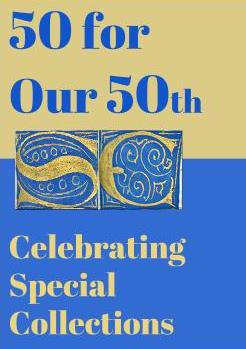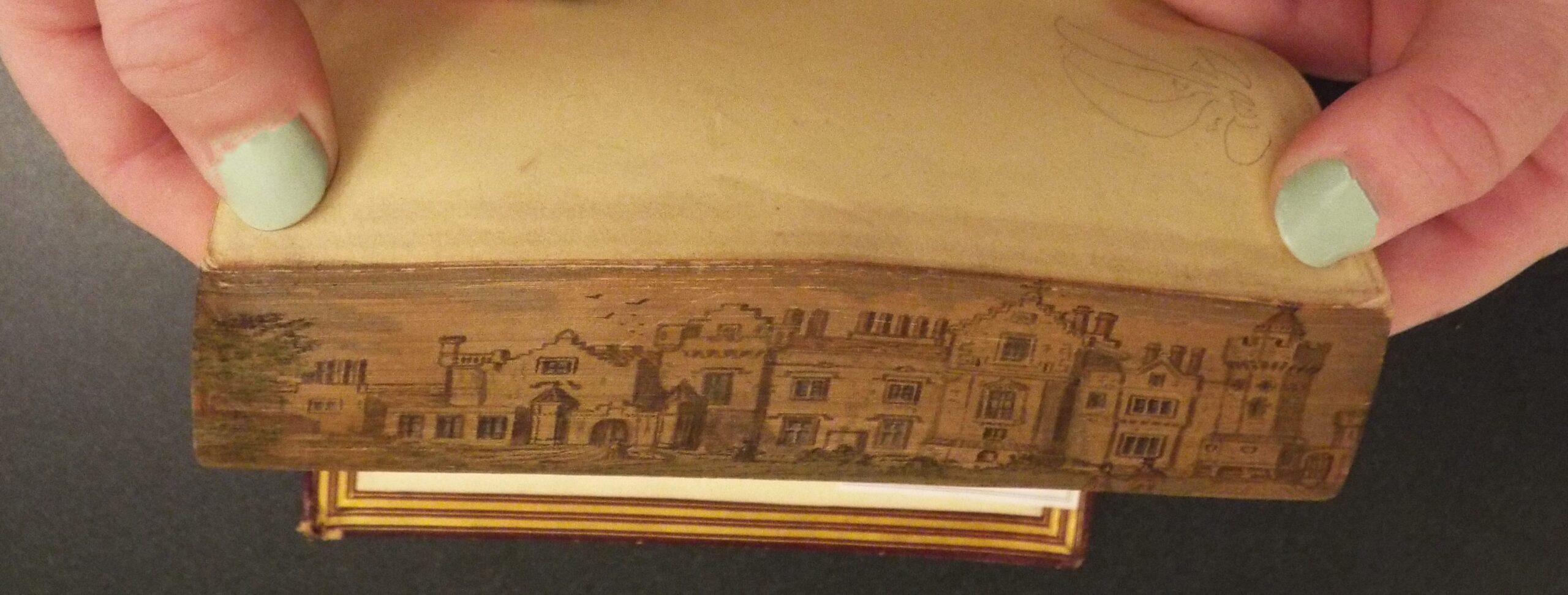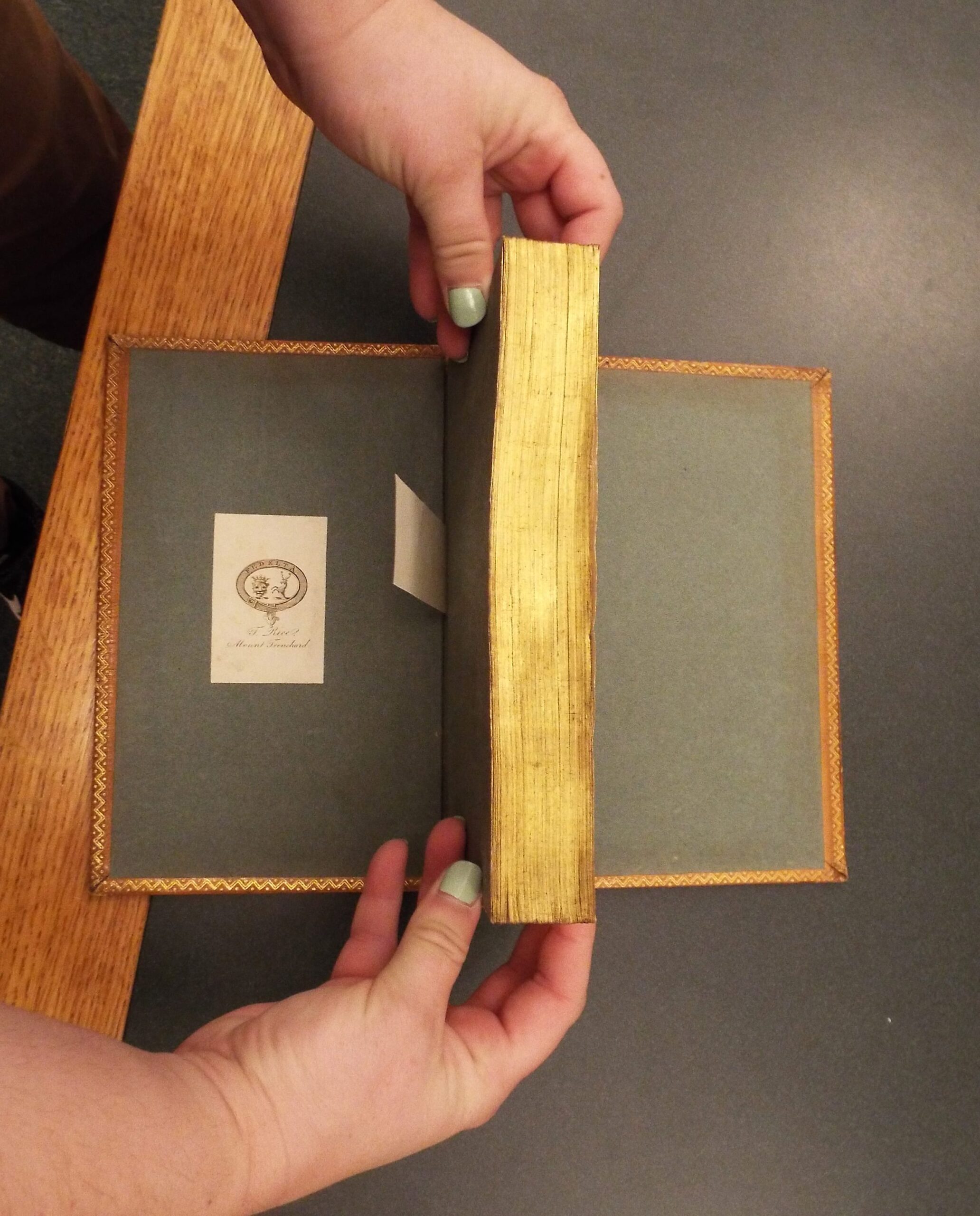Special Collections
50 Features of Special Collections: Fore-edge Paintings

Special Collections has three books with fore-edge paintings.
A fore-edge painting is a scene painted on the edges of the pages of a book usually in the opposite side to the spine. Fore-edge painting is an art form that dates as early as the 10th century in more simple paintings. There are two basic forms; paintings on edges that have been fanned and painting on edges that are closed. A fanned painting is one that is not visible when the book is closed. In order to view the painting, the leaves of the book must be fanned, exposing the edges of the pages and thereby the painting. A painting that is on the closed edge of a book need not be fanned to view the image. Fore-edge paintings can be subtle and very simple, while others are colorful and quite detailed. Some special and hard to find books even have double fore edge paintings, where the illustration changes as you turn the book and reverse the fanning of the pages. Fore-edge paintings that are visible served a utility, as the unique paintings made the book identifiable when the book pages were facing outward. As fore-edge paintings are often hidden, it is possible there books with fore-edge paintings yet to be discovered in our collection .
Our fore-edge paintings are to be found in three 19th century examples of Walter Scott’s books—two copies of :
Walter Scott’s Rokeby : a poem (Edinburgh: John Ballantyne and Co., and London: Longman, Hurst, Rees, Orme, and Brown, 1813) PR5312 .A1 1813a
and Walter Scott’s Marmion; a tale of flodden [sic] Field (Edinburgh; printed for Archibald Constable and Co; London: Longman, Hurst, Rees, Orme, Brown and Green; J. Murray and Hurst, Robinson and Co., 1825) PR 5311 A1 1825

In one of the copies of Walter Scott, Rokeby; a Poem found in the Fine Press section of the Michael and Margaret B. Harrison Western Research Center the painting is identified as Greta Hall, Keswick Bridge. Greta Hall is a house in Keswick in the Lake District of England. It is best known as the home of the poets Samuel Taylor Coleridge and Robert Southey. Greta Hall was visited by a number of the Lake Poets including Sir Walter Scott, the author of the book.


Since all three copies of our Walter Scott books bear fore-edge paintings of village scenes and castles, one can imagine a cottage industry or productive artists painting the works. Unfortunately, the fore-edge artists are rarely identified.
For further information about Fore-edge paintings see:
https://en.wikipedia.org/wiki/Fore-edge_painting